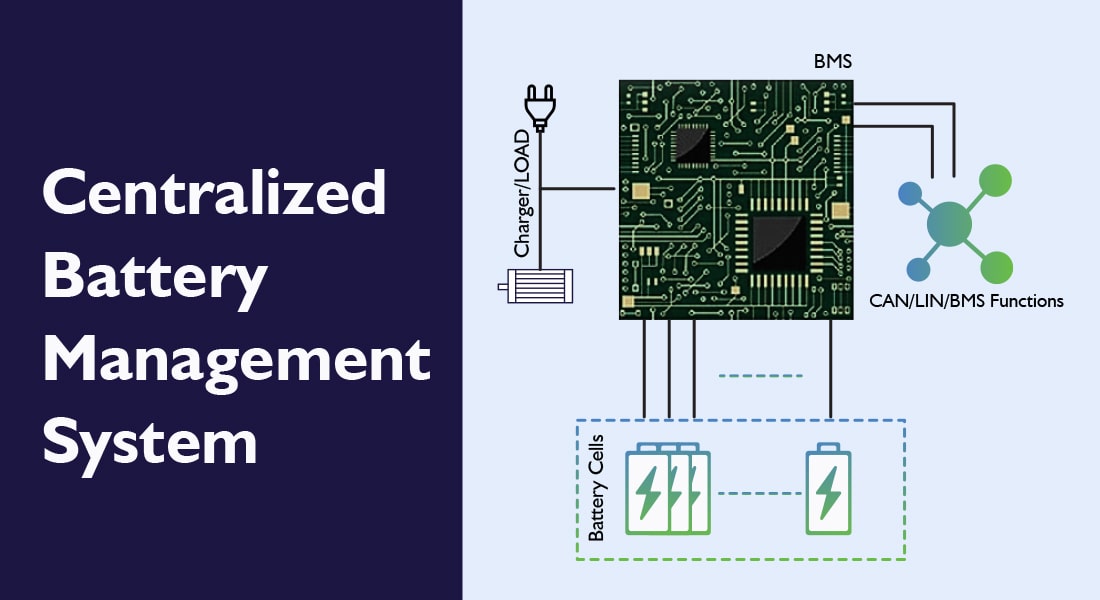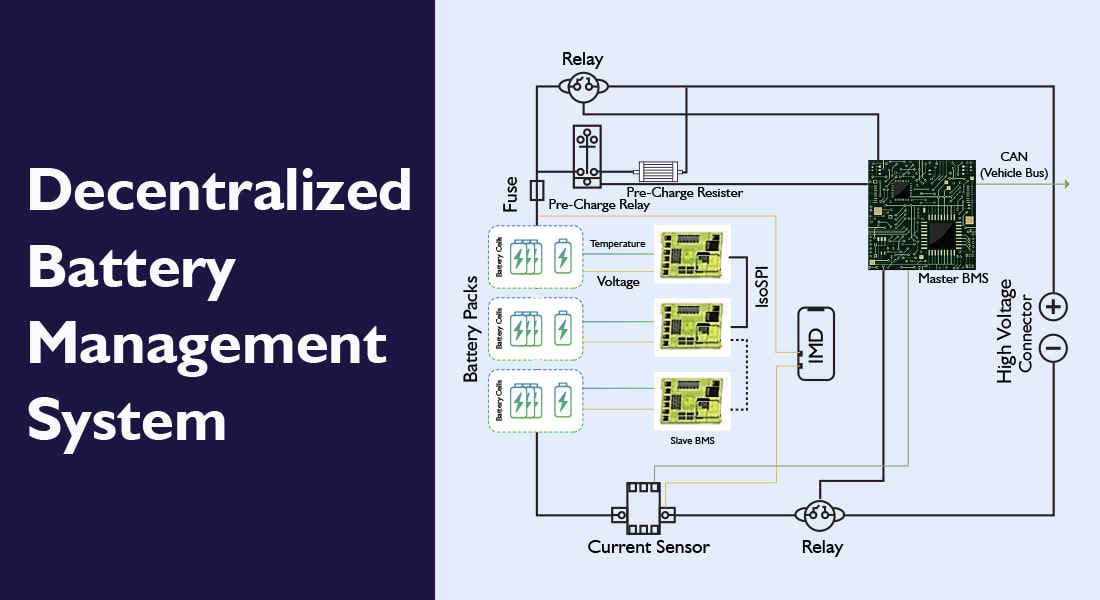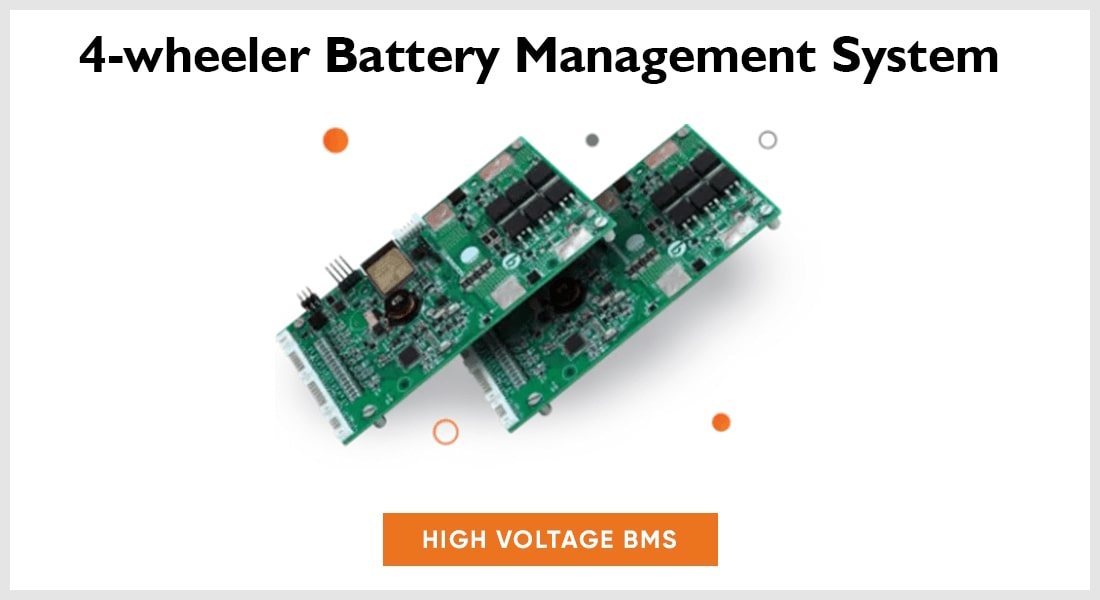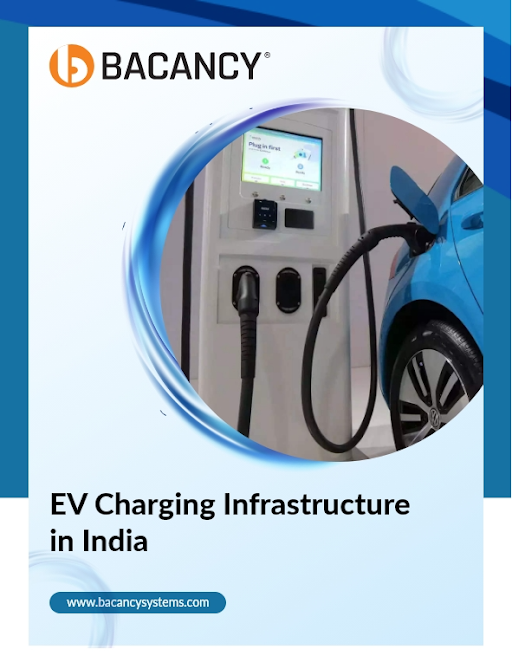| Parameter | High Voltage | Low Voltage |
|---|---|---|
| Voltage: ISO 6469-3 class A and B | Class 2 ≤ 600 VAC and ≤ 900 VDC Class 3 ≤ 1000 VAC and ≤ 1500 VDC |
Class 1 : ≤ 30 VAC and ≤ 60 VDC |
| Application | Electric car, Bus, trucks (4 wheelers) | Light electric and hybrid vehicles (2 or 3-wheelers) |
Quick Summary:
The adoption of a smart battery management system has become quite common these days in 2 and 3-wheeler electric vehicles. Focusing on the 4-wheeler electric vehicles, and buses, a smart BMS in the market has already addressed significant challenges such as protection and enhanced battery performance.
However, as the new EV gen models continue to raise the bar in terms of the higher battery pack voltages compared to its previous EV gen models, this blog will analyze different architectures of battery management system for electric vehicles and suggest the best possible high voltage BMS for your battery pack. Let’s get started.
Table of Contents
Introduction
Battery management system for electric vehicles is the central unit in command for the cells of the battery pack, ensuring a safe, reliable, and effective lithium-ion battery operation. A high voltage BMS typically manages the battery pack operations by monitoring and measuring the cell parameters and evaluating the SOC (State Of Charge) and SOH (State Of Health). The HV battery management system protects the cells in the battery pack by ensuring safe battery pack operations under the SOA (Safe Operating Area).
The classification of BMS for electric vehicles comes under 2 categories, i.e. LV (Low Voltage) and HV (High Voltage)
A high voltage battery management system has numerous Li-ion cells connected in series and parallel to cumulatively account for the total voltage and capacity of the battery. For example, an HV BMS of a 400V, 20kWh electric bus with LiFePO4 battery cells will have 125 cells in series and 1 in parallel.
Enhance Your Battery Performance with Every Charge Cycle
Employ India’s Most Reliable and Advanced Smart Battery Management System for Your EV battery today.
It is essential to understand that a lithium-ion battery pack requires a battery management system regardless of the voltage specifications. With multiple options available based on the topology of BMS, choosing the right battery pack is necessary. Fundamentally, battery management system for electric vehicles are classified into centralized and decentralized BMS.
Let us analyze and compare the two architectures to understand what is favorable for your battery pack.
Centralized Vs Decentralized Battery Management System
| Centralized | Decentralized |
|---|---|
| A single central pack controller that monitors, controls, and facilitates cell balancing. | Doesn’t consist of cell monitoring and intelligence circuitry. |
| The board doesn’t require an external power supply powered through battery output. | The board may or may not require an external power supply as per assembly. |
| The internal communication with the cell monitoring unit is enabled through the intelligence circuitry unit to capture the battery’s State of Charge (SoC) and State of Health (SoH) and control PDU (Power Distribution Unit) for external communication. | Decentralization is implemented through modular, master-slave, and distributed topologies. |

Let us quickly go through the various topologies that can be employed to design the architecture for a decentralized battery management system.
Modular:
In this topology, the BMS is split into numerous identical modules with wire bundles channeling to one of the pack’s batteries. Multiple modules are present, where one of them coordinates in terms of functioning and communication with the rest of the system, and the rest serve as a remote measuring device. Transferring data from other modules to the master module occurs through a communication link.
Master-Slave:
Similar to the modular system to use identical modules, each measuring the voltage of the targeted cells.
As the name suggests, a master-slave architecture has both the units intact, with the slave unit controlling and balancing battery cells within the module. A slave unit establishes a smooth communication with the master via the communication interface.
The other operations, such as PDU control (Power Distribution Unit), external communication, and state estimation, are managed by the master unit.
In contrast, the master functions quite differently from the modules. It does not measure the cell voltage, but rather handles communications and computation.
Distributed:
The distributed topology is very distinct from the above two. Typically, the electronics are housed and grouped differently in other topologies. This BMS architecture has electronics held on boards of cells that are directly placed on the measuring cells.
A distributed BMS utilizes a handful of wires required for communication between the BMS controller and boards of the cell to facilitate communication and computations.
Significance of Decentralized Architecture for High Voltage BMS
Many cells are present in a high voltage battery management system for electric vehicles. The more the number of cells, the more wires are drawn from the cells to the BMS. All these factors contribute to increasing the complexity of the HV battery pack system. You should consider these top benefits of using a decentralized BMS architecture.

1. Precision of Measurement:
The battery management system for electric vehicles is critically centric on fundamental parameters like temperature, voltage, and current. Measurements are carried out over cell monitoring wires and are vulnerable to disruptions from noise attenuations. Decentralized BMS have short wires comprising high electromagnetic compatibility, reducing the susceptance to these disturbances.
2. Reliability in Connection:
A decentralized BMS is an environment where the cell monitoring circuitry is placed near the cells via short wire connections (from the cells to the BMS). Consequently, the short wiring eliminates the effect of vibrations and mechanical shocks that may cause disconnection. Therefore, the connection reliability is taken care of through a decentralized BMS.
Your EV Battery Pack is in Safe Hands
Bacancy is India’s top BMS Manufacturer and Supplier. We build tailored battery management solutions crucial for your battery protection and performance.
3. Expanded Versatility:
Conventionally, the count for cell monitoring inputs in a centralized battery management system is fixed. The good news is that It is easy to work with a decentralized architecture to increase and decrease the battery pack cell count, enabling grounds for multiple modules to be stacked.
Bacancy’s High Voltage Battery Management System for Electric Vehicles
Bacancy’s high voltage BMS is a smart solution employing decentralized architecture, suitable for high voltage applications. Equipped with master-slave topology, with Battery Monitoring Unit (BMU) as the slave and Slave Monitoring Unit (SMU) as the BMS master.
The Battery Monitoring Unit comprises balancing channels, cell voltage, and temperature measurement. The Slave Monitoring Unit coordinates with the BMUs to gather data on measurements and transmit control commands over isolated SPI channels.
The SMUs use these measurements to perform state estimation and facilitate cell balancing and control the PDU(Power Distribution Unit) to make sure that the battery operation is within the SOA (Safe Operating Area) that is BMS configured.
Moreover, SMUs are equipped with high voltage battery management features like Insulation Monitoring Device (IMD) interface, interlock check, weld detection.many more.

Features of High voltage BMS:
- Each Slave interface supports 3-16 Cell
- Battery chemistry support: Li-on, Li-polymer, LiFePO4 Battery packs
- Voltage: 24V to 500V configurable, Current: 150A continuous
- Communication Protocols: BLE, WiFi, Non-isolated CAN, GSM/GPRS & GPS interfaces
- Master and Slave modules in series with external power module to support high voltage Battery pack application
- External Power Module having Precharge, Hole sensor, Charge/Discharge control
Conclusion
Battery management system for electric vehicles is a crucial supervisory system that ensures battery pack safety. Nowadays, with the significantly increased Lithium-ion battery technology adoption in automobiles and energy storage, the integration, architecture, and design of an efficient, high-performing BMS for high voltage batteries has become the center of focus.
As the EV variants will come up with higher and higher battery voltages in the upcoming years, decentralized BMS architecture will be an ideal choice for scaling up and customizing the battery management system.
Frequently Asked Questions (FAQs)
A BMS consistently tracks the battery pack voltage for individual battery cells and controls the current supply to avoid overcharging. Battery management system can execute maximum changing limits or discharge current as per temperature.
BMS helps to avoid the overcharging and over-discharging of the battery. What BMS does is that it maintains the charging level between the maximum and minimum allowed charging and discharging capacity of the battery. In other words, BMS is a very crucial device both for the safety of the battery and the user
An LiFePO4 BMS consists of several hardware and software functional blocks programmed with functions that protect the battery pack by monitoring and controlling its charge and discharge conditions. A good BMS should offer protection against: Over and under-voltage.
Your Success Is Guaranteed !
We accelerate the release of digital product and guaranteed their success
We Use Slack, Jira & GitHub for Accurate Deployment and Effective Communication.



